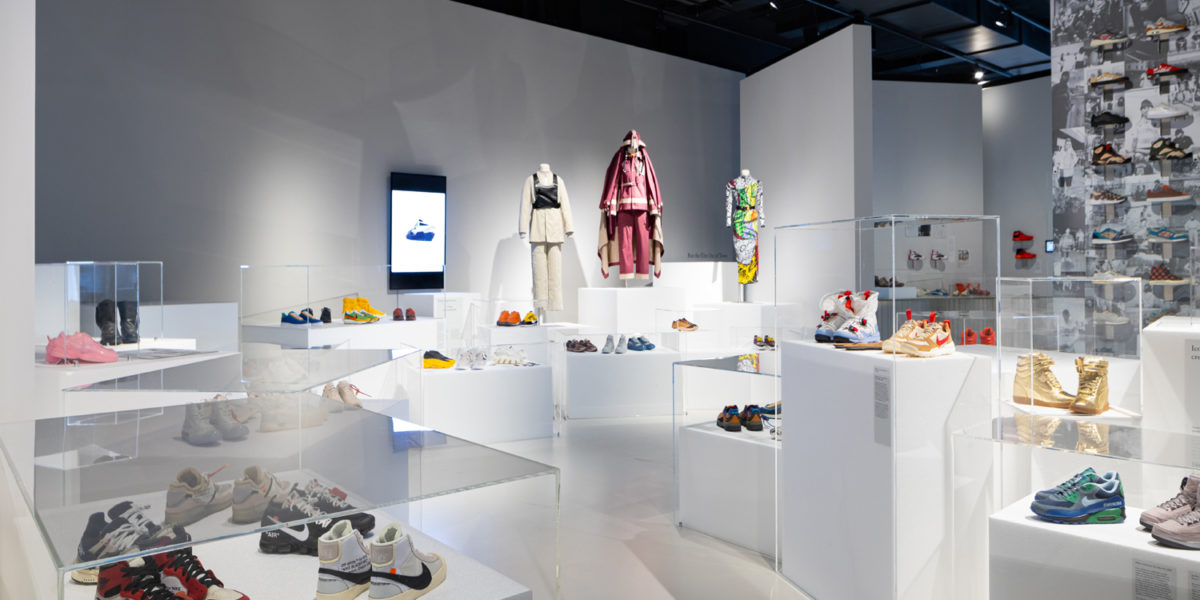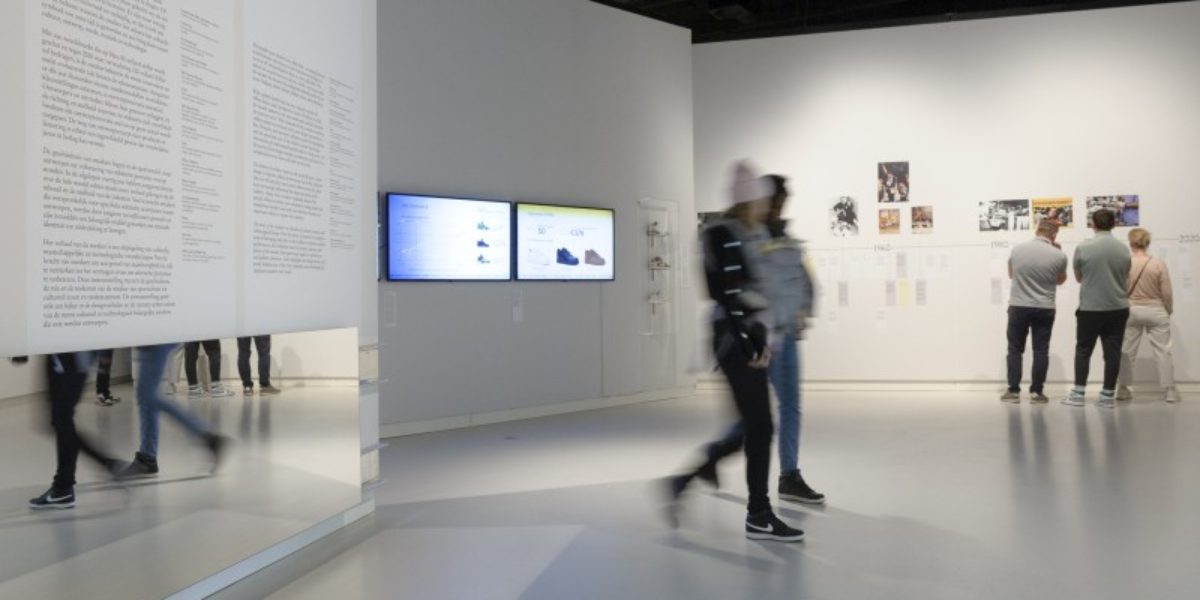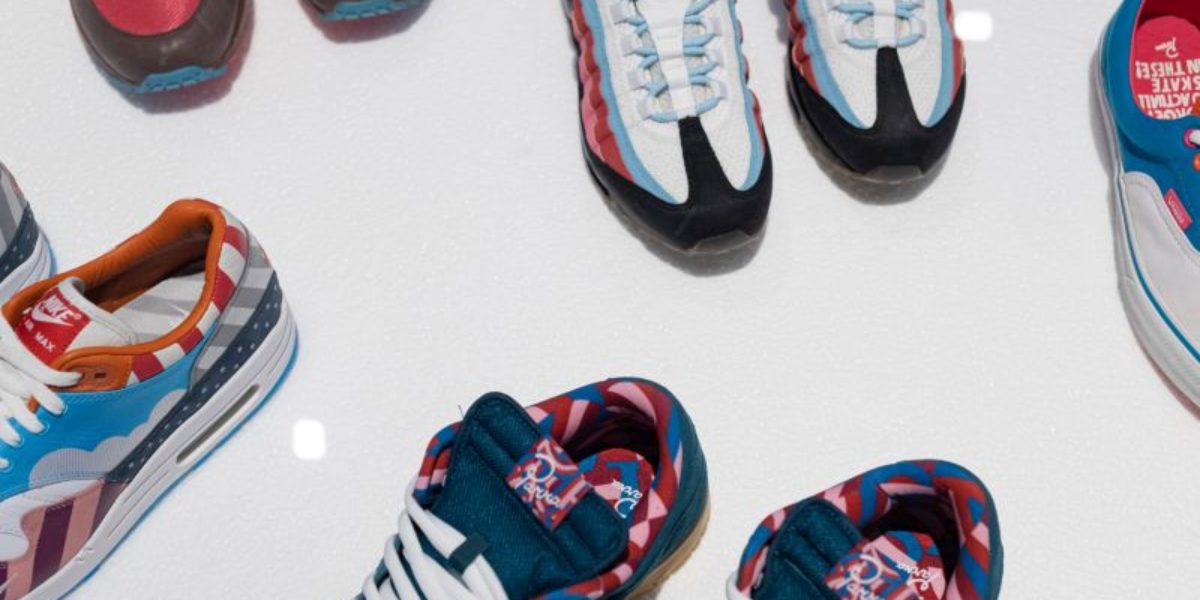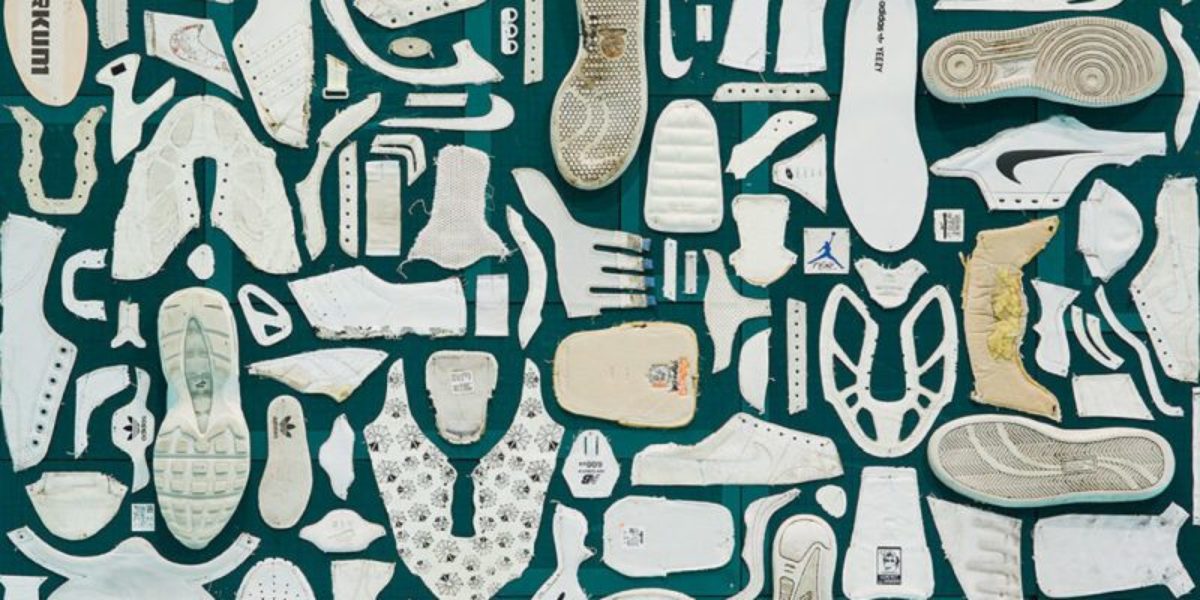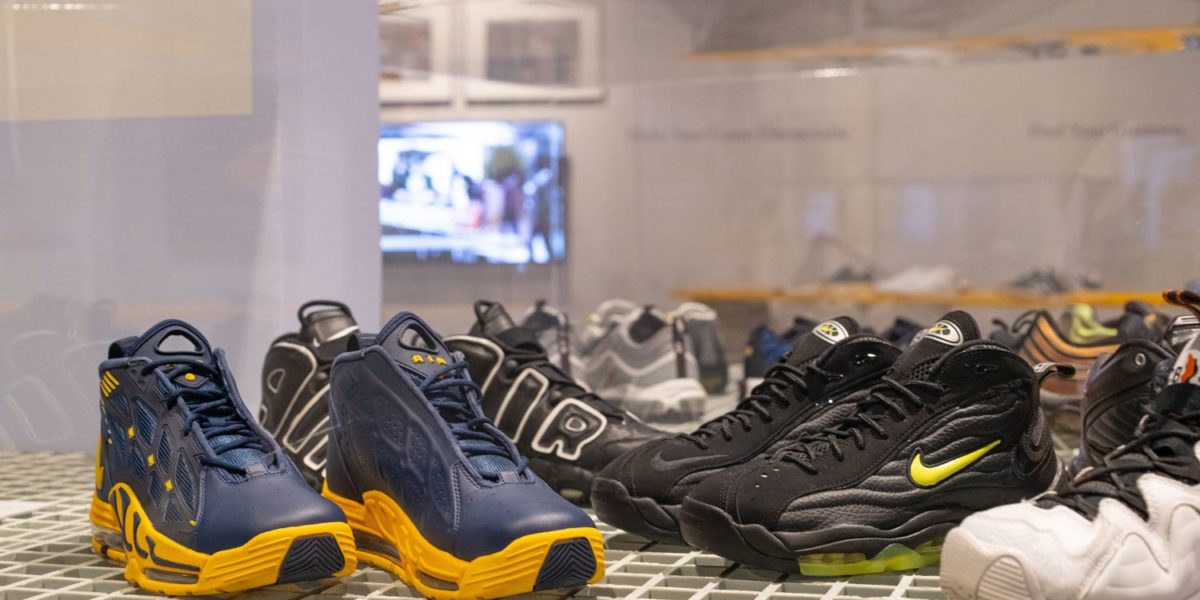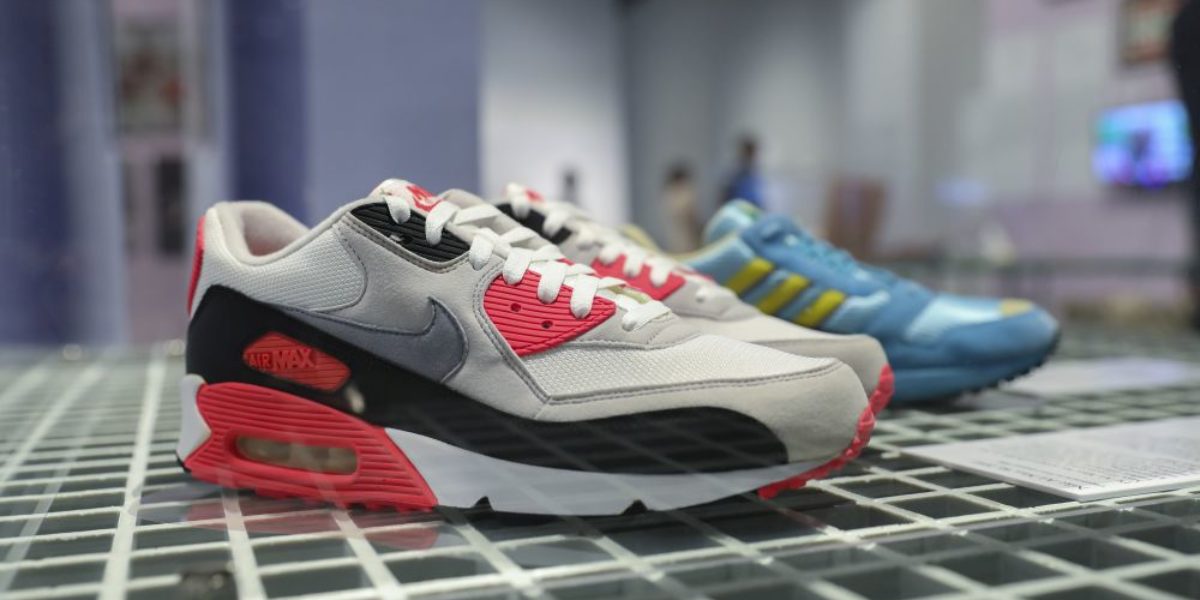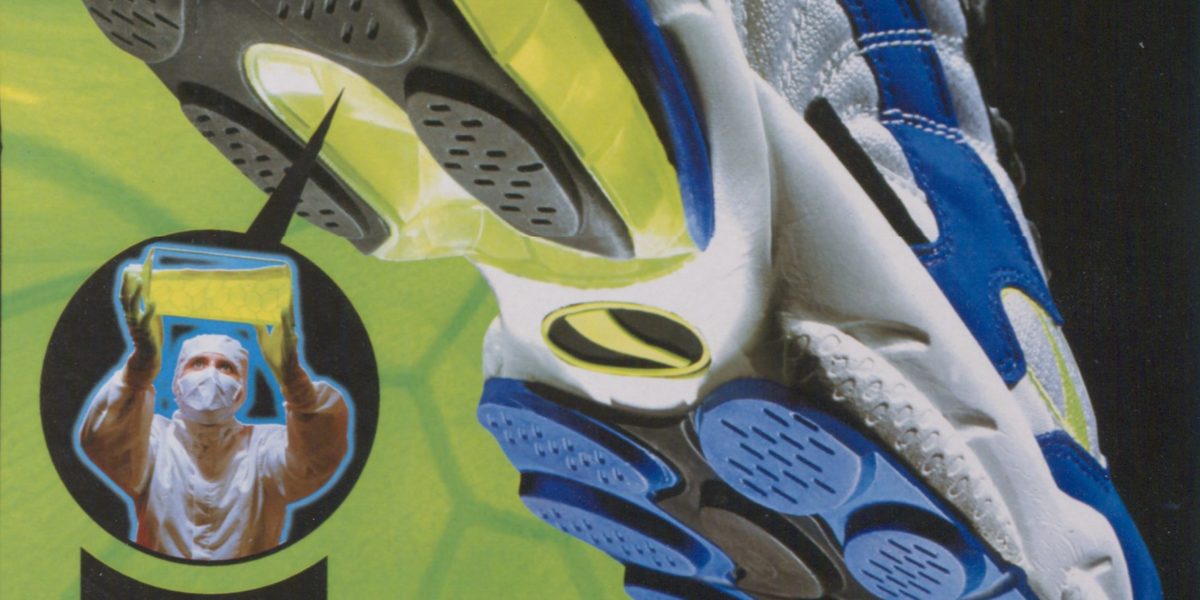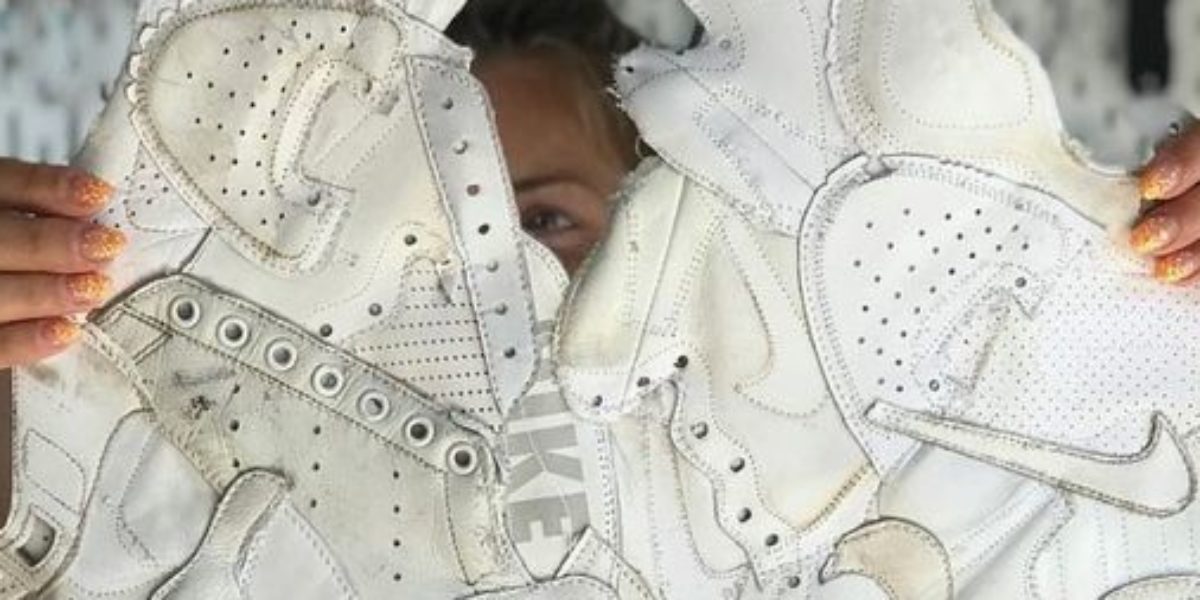When sneaker brands realized the popularity among young people, they tried to entice them by using musicians and athletes as role models. In the 1980s, the first collaborations emerged. However, this was not limited to role models, the first collab with a store also emerged during this time.
Jordan
In 1984 tekende Nike een contract met basketbalspeler Michael Jordan, destijds een groentje bij de Chicago Bulls. Voor het eerst ontwikkelde het merk speciaal een schoen voor één sporter: de Jordan I. Het succes van deze schoen leidde tot meerdere modellen en uiteindelijk in 1997 tot een op zichzelf staand merk. Het is Nike’s enige offshoot-merk. Het bureau Wieden+Kennedy ontwikkelde een uitgekiende reclamecampagne voor het merk. Jordan werkte voor een reeks reclamespotjes samen met regisseur Spike Lee als zijn alter ego Mars Blackmon, het door Jordan geobsedeerde personage uit Lee’s film She’s Gotta Have It (1986). Inmiddels heeft het merk Jordan zesendertig sneakermodellen uitgebracht.
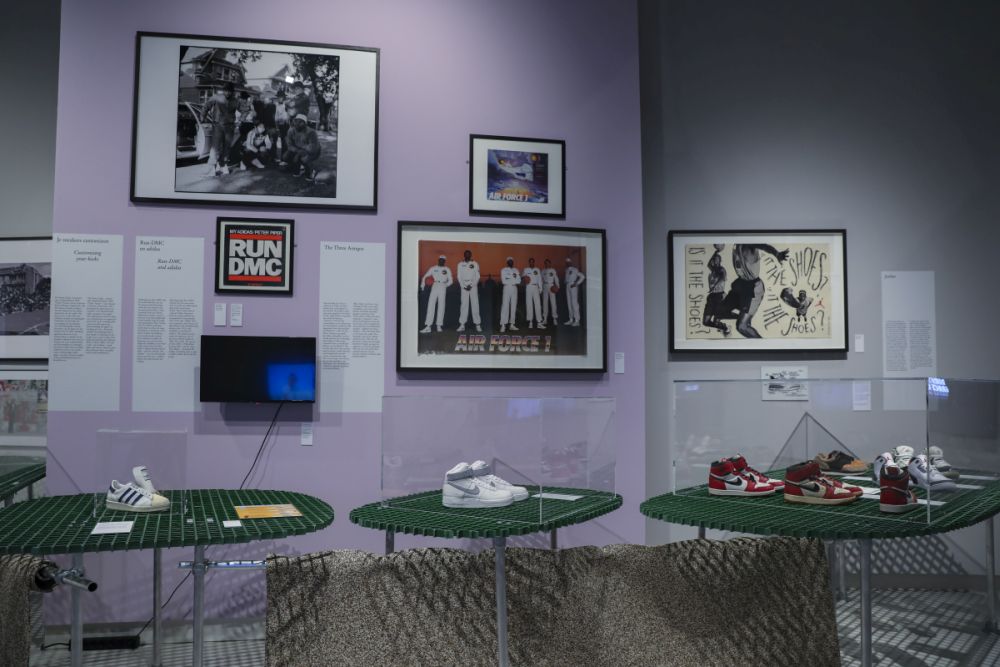
Photo Michael van Hal
Run-DMC and Adidas
Hip hop group Run-DMC became the first non-sports stars to secure an endorsement deal with a sportswear brand. Their iconic look, of unlaced Adidas Superstars with the tongue pushed out, encapsulated a long-popular New York style. Adidas shoes were expensive and, because of distribution and manufacturing delays in the 1970s, only available to professional athletes. This initial scarcity made the Superstar one of the most coveted models in 1980s New York. The success of Run-DMC’s 1986 album Raising Hell – and the song ‘My Adidas’ – prompted the Adidas marketing team to sign a million-dollar deal with the group.
Skating California
A unique attitude towards sneakers emerged from the West Coast of the United States in the 1970s and ’80s, as a result of the growing popularity of skateboarding. Crews such as the Z-Boys sought functional and hardwearing sneakers that suited their vigorous style of skating and could withstand high-speed contact with pavements or concrete. They favoured sneakers from the local brand Vans, because their uniquely responsive business model meant that existing shoes could be adapted to meet the specific demands and needs of their users.

Photo Peter Tijhuis
Where Jordan meets skate
Skaters often wore basketball shoes – such as Nike’s Blazer, which offered a combination of robustness and stability. At the time, very few of the major brands created models specifically for skateboarding. Nike’s Air Jordan I became popular with many skaters, especially when the price was discounted after Nike flooded the market. Many models subsequently developed by emerging skate brands in the 1990s bore similarities to Jordan sneakers.
The Three Amigos
When Nike’s Air Force 1 was released in 1982, it was only available in stores for a brief period. It became especially popular in Harlem, New York, which is where the shoe’s nickname, ‘Uptowns’, comes from. Its prevalence across the East Coast of the United States was noticed by three Baltimore retailers – dubbed ‘the Three Amigos’ – who convinced Nike to re-release the model. The resulting Color of the Month initiative from 1984 was the first time a discontinued model had been brought out again in response to consumer demand. This was the start of the now common practice of retro releases, regional exclusives and limited editions.

Nike Air Force 1. Photo Michael van Hal




